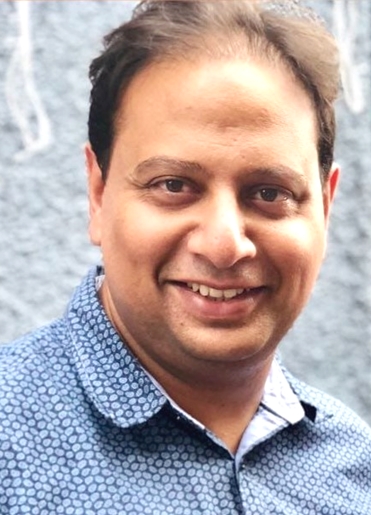
 JAMMU: In the picturesque region of Kashmir, where natural beauty and serenity often take center stage, there exists a silent battle within the lungs of its residents. Dr. Naveed Nazir Shah, a top Pulmonologist and the Head of the Department at Chest Disease Hospital Srinagar, brings to light the intricate relationship between environmental factors and respiratory diseases in this exclusive online interview with Ajmer Alam Wani, Editor-in-Chief of JK Monitor (www.jkmonitor.org).
JAMMU: In the picturesque region of Kashmir, where natural beauty and serenity often take center stage, there exists a silent battle within the lungs of its residents. Dr. Naveed Nazir Shah, a top Pulmonologist and the Head of the Department at Chest Disease Hospital Srinagar, brings to light the intricate relationship between environmental factors and respiratory diseases in this exclusive online interview with Ajmer Alam Wani, Editor-in-Chief of JK Monitor (www.jkmonitor.org).
Kashmir's climatic conditions, characterized by more than six months of cold temperatures, create a challenging backdrop for those grappling with respiratory ailments such as Asthma, COPD, and chronic lung conditions. Dr. Naveed Nazir Shah underscores the heightened vulnerability to upper and lower respiratory tract infections in these frigid conditions.
Adding another layer to the respiratory conundrum is the abundant green vegetation in Kashmir, which releases copious amounts of pollen, particularly during spring, triggering allergic diseases like rhinitis and asthma. Pesticide spraying during crop cultivation further exacerbates allergies if patients fail to take precautions.
Dr. Shah doesn't stop there; he delves into the impact of industrial proximity on respiratory health, with dusty roads and residential areas situated close to industrial zones contributing to the rising incidence of lung diseases. However, the most significant factor casting a shadow on Kashmir's respiratory health is its high prevalence of smoking, earning it the title of "the smoking capital of the country."
Leading a department with finite resources, Dr. Naveed Nazir Shah has committed himself to elevate healthcare standards in the region. His department now boasts 24-hour emergency services, a critical care unit, sleep lab, allergy lab, and advanced pulmonary function testing lab. Additionally, it offers interventional pulmonology services on par with leading institutes, including bronchoscopy, thoracoscopy, endobronchial ultrasound, and more. To address the dearth of specialists in the region, postgraduate courses in Pulmonary Medicine have been introduced.
In the wake of the COVID-19 pandemic, Dr. Shah emphasizes the paramount importance of safety for patients, attendants, and medical staff alike. He draws from the hospital's history as a sanitarium for tuberculosis patients, highlighting its well-ventilated wards designed for infection control measures. Dr. Shah's vision extends to incorporating newer technologies in the wards to prevent cross-infections.
With respiratory diseases on the rise, Dr. Shah advocates for good cough etiquette, healthy diets, and early detection as essential strategies for reducing the burden on lung health. Early diagnosis not only aids in treatment but also curtails the risk of infectious diseases spreading within the community.
Addressing a common misconception, Dr. Shah clarifies that inhalers are neither habit-forming nor a last resort; instead, they offer fewer side effects compared to oral medications. He dispels the notion that breathlessness due to asthma or COPD is contagious; emphasizing that only infectious disease like tuberculosis can be transmitted through droplets.
Dr. Naveed Nazir Shah's parting advice to aspiring pulmonologists and healthcare professionals is to find joy in their work, approach it with honesty, and maintain compassion for their patients. The fulfillment of ending a patient's suffering, he affirms, surpasses any other reward in the field of medicine.
For detailed interview read below questions and the answers till end:-
- Can you tell us about your background and experience in the field of pulmonology? What motivated you to specialize in treating tuberculosis and respiratory diseases?
Answer: My name is Dr Naveed Nazir Shah presently working as a Professor of Pulmonary Medicine at Government Medical College (GMC) Srinagar. I am posted in Chest Disease (CD) Hospital where I am heading the department since 2014. I was born in Srinagar and had my schooling from Tyndale Biscoe School. I did my MBBS and MD from JN Medical College, Aligarh Muslim University (AMU). After completing my MBBS, I had the option of opting for much lucrative branches after qualifying the MD entrance test but I opted for Pulmonary medicine because my idea was to come back to Kashmir to serve the people as there was an acute shortage of qualified Chest Physicians in the Valley in spite of a huge burden to respiratory diseases.
- Could you explain your approach to diagnosing and treating respiratory ailments in patients? How do you approach patient education and empowering them to manage their respiratory conditions?
Answer: In respiratory medicine there are 2 types of disorders. Acute ones, which need short term treatments and get cured. Then there are chronic disorders which need long term treatment which may be lifelong too. So the primary is to diagnose the disease on the basis of symptoms, signs and relevant investigations and then counsel the patients regarding the disease, its preventive measures, treatment of disease and most importantly the need for continuation of treatment.
- How do you stay updated with the latest advancements and research in the field of pulmonology? Are there any specific technologies or techniques that you utilize in your practice to enhance patient care?
Answer: Medicine is an ever changing field and you need to be updated about the latest advancements both for the sake of treatment of patients and also for the purpose of teaching the undergraduate MBBS and Post Graduate MD students. Attending CMEs, Medical Conferences and Workshops keeps you updated.
- Can you share any notable cases or success stories from your practice? What challenges do you commonly face when treating patients with tuberculosis?
Answer: Every case you treat and reduce the misery of the patient is a success story for you especially the poor and needy ones who can’t afford to go outside. In our effort to upgrade the facilities both diagnostic like endobronchial ultrasound thoracoscopy and establishment of sleep and allergy labs or therapeutic like laser therapies, insertion of stents or whole lung lavage in our Chest Diseases Hospital for which the patients had to go outside the state, gave immense satisfaction. The manner in which our hospital took the responsibility of dealing with the covid pandemic and the centre with the lowest mortality makes me proud of all my staff both medical and paramedic.
- In your opinion, what are the key factors that contribute to a successful treatment outcome for patients with respiratory ailments?
Answer: The main factors remain taking a proper history a proper physical examination followed by appropriate investigations to reach to a diagnosis and then proper counselling of the patient regarding the disease and the need for treating. The key remains to listening to the patient and address his concerns.
- How do you ensure effective communication and collaboration with other healthcare professionals in the multidisciplinary care of respiratory diseases?
Answer: Our department is a part of Government Medical College housed in Chest Diseases Hospital. We often need help from other departments for cases admitted with us with other comorbidities and the doctors on call from the concerned departments visit our hospital for consultations. Same way we also visit other associated hospitals of GMC where their patients needs a Pulmonary consultation. In addition we have intra and inter departmental meetings to discuss complicated cases.
- Can you discuss any ongoing research or clinical trials that you are involved in related to pulmonary diseases?
Answer: Ours is a Post Graduate Department where in addition to providing clinical care are part of research projects on Asthma, interstitial lung disease, COPD, tuberculosis, pneumonia etc We are a part of multi centric randomised control drug trials on COPD and asthma.
- What are the most common misconceptions or myths that patients have about respiratory diseases, and how do you address them?
Answer: The most common myth which we see is regarding the use of inhalers. People consider them as habit forming and also the last resort of treatment for the disease which is contrary to the truth that inhaled medication has far lesser side effects as compared to oral medicine. Also people consider breathlessness which is due to asthma or COPD as transmissible and run away from these patients. It is only the infectious diseases like tuberculosis or other viral/ bacterial that can be contracted by droplets.
- How do you assess the impact of environmental factors on respiratory health, especially in the context of living in Kashmir?
Answer: Environmental factors play an important factor in the respiratory diseases. In Kashmir we had cold temperatures for more than 6 months, where we see an exacerbation of the diseases of patients suffering from Asthma, COPD and other chronic lung ailments. There is an increased chance of developing upper and lower respiratory tract infections. We have enough green vegetation here which shed huge quantity of pollen especially during spring season which increases attacks of allergic diseases like rhinitis and asthma. Spraying pesticides and harvesting crops also can lead to aggravation of allergies if the patients don’t take precautions. Dusty roads and residential areas build close to industrial areas have also shown to lead to increase in the incidence of lung diseases. Last but not the least smoking is the main factor in the aetiology of almost all pulmonary diseases and the prevalence of smoking in Kashmir is very high, so much so that it may be called the smoking capital of the country which also plays a huge factor in the reason for having high respiratory burden here.
- As the Head of the Department at Chest Disease Hospital Srinagar, what are your key responsibilities and how do you ensure quality patient care?
Answer: Heading a department is a huge responsibility; you have to modulate your limited resources and try to provide quality services to the society. My constant endeavour has been to upgrade the department to try to provide diagnostic and therapeutic facilities to the people of JK UT for which people had to go to outside the UT for treatment. We upgraded the facilities to start with 24 emergency services, established ICU for critical patients, started Sleep Lab, Allergy Lab, Advanced Pulmonary Function Testing Lab, and provided an interventional Pulmonology facilities like bronchoscopy (flexible and rigid), thoracoscopy, endobronchial ultrasound (radial and linear), laser/ cryo services, stent placements etc etc which are all at par with any leading institute. To add to this started postgraduate courses DNB and MD in Pulmonary Medicine to produce Pulmonologists which would cater to the needs of the society keeping in view the high prevalence of pulmonary diseases here.
- What steps do you take to ensure patient safety and minimize the risk of infections in a hospital setting? What are preventive measures or lifestyle changes that can help improve respiratory health? What is importance of early detection and timely treatment for respiratory diseases?
Answer: Safety of not only patients but also their attendants and also paramedical and medical staff is of prime importance not only to eliminate the risk of transmitting infections but to provide quality care by the medical personnel. Covid pandemic has taught us and the society as a whole as to how to prevent the spread of infection like usage of masks in infective areas, cough and hand hygiene, maintaining a distance and most importantly hand washing. Our hospital had been built as a sanitarium for tuberculosis patients at a time when no treatment for the disease was available and patients were put in adequately ventilated places with good food and air. So our wards are quite well ventilated for the infection control measures. In addition we have given requisition for having newer technologies in the wards which would prevent cross infections in the hospital.
Good cough etiquette and appropriate behaviour and good healthy balanced diet by all can help us to reduce the burden of respiratory disease and improve our lung health. Early detection and treatment remains the mainstay for respiratory diseases. Early diagnosis not only helps the patient to arrest and treat the disease in the early stage and avoid progression but also reduces the risk of transmission of infectious diseases like tuberculosis to other parts of community. Early detection of lung cancer can lead to curative treatment options which otherwise can be lethal.
- How do you manage the emotional and psychological aspects of patients dealing with chronic respiratory conditions?
Answer: Chronic respiratory diseases can be debilitating for the patients not only physically but also mentally and emotionally. It is always important to talk to the patients at each visit about their disease, educate and encourage them and give them hope to fight the disease.
- What role do you believe public health initiatives play in reducing the burden of tuberculosis in the community?
Answer: Public health initiatives can help a lot particularly imparting education about the different aliments, their symptoms and the preventive measure that need to be taken. It can prevent the spread of infections be it tuberculosis, covid, influenza or any viral/bacterial disease. Spreading information about the ill effects of smoking and measures which can help people to quit the habit can also help the community
- How do you ensure continuity of care for patients with chronic respiratory conditions, particularly during transitions in healthcare settings?
Answer: There should be a proper referral system in place for all the branches of medicine so that good quality care can be provided. A simple respiratory track infection can be treated at primary healthcare setting and lung cancer or any complicated can better dealt in a Tertiary Care Setting. Getting all kind of patients in a Tertiary Care leads to huge burden on the healthcare facilities and in turn the quality of healthcare suffers.
- Are there any specific initiatives or programs that you have implemented to raise awareness about respiratory health in the community?
Answer: Preventive medicine is very important. Our constant endeavour is to create an awareness among the people about the different respiratory disorders viz a viz identification of the symptoms of disease, early diagnoses and treatment and obviously the preventive measures, through audio visual print media, social media etc.
- What advice would you give to aspiring pulmonologists who are interested in specializing in respiratory diseases?
Answer: My advise to my aspiring Pulmonologists or any doctor would be to enjoy your work and be honest and compassionate to your patients. The pleasure you draw when you end misery of a patient is more satisfying than anything else.




